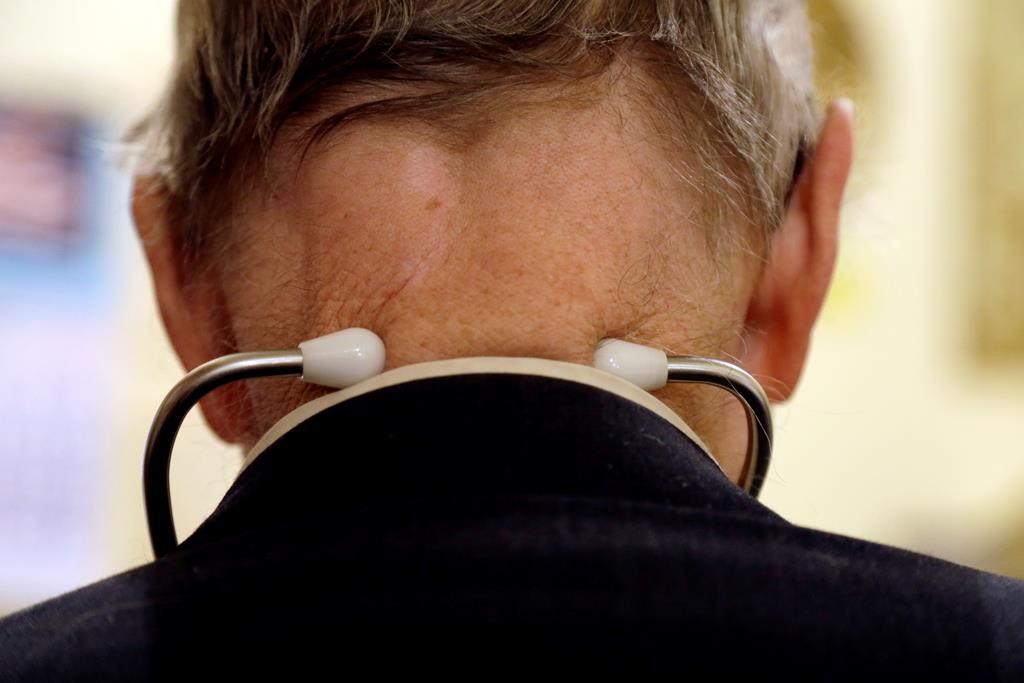In breaking down the province’s ongoing family doctor shortage, the Ontario College of Family Physicians (OCFP) says more than 65,000 people in Middlesex-London are without a family doctor.

In a report released Friday, its data highlighted that the number of people without a family doctor grew from 57,092 in 2020 to 65,576 in 2022. The local data includes all people assigned to the Middlesex-London Ontario Health Team (OHT).
Dr. Eric Wong, a family doctor in London and an OCFP board member, said these numbers, along with similar ones seen across the province, are “very concerning.”
“I’ve been a family doctor here in London for 18 years, and every week, I get asked by someone who is looking for a family doctor,” he said. “The problem is compounding and getting worse.”
Notably, the OCFP highlighted that the shortage is having the biggest impact on those who are the most vulnerable in the London region.
According to the data, 16,418 people with the lowest incomes did not have a family doctor in 2022, along with 10,671 people who suffer from mental illness and 3,369 who live with diabetes. Additionally, of those without a family doctor, 10,568 live in the most racialized neighbourhoods.

Wong said those who do not have family doctors “get sicker.”
“They visit emergency rooms more often, they’re admitted to hospitals more often, (and) things that we do as a family doctors, in terms of preventive care, screening for cancers, providing vaccinations, some of those things can be missed,” he said. “For someone who doesn’t have a family doctor, you’re going to be exposed to more illnesses than you have to be and perhaps get sicker than you have to be.”
On the provincial level, 2.2 million Ontarians have been left without a family doctor, a “significant rise” from the previously reported 1.8 million in 2020.
“Every single Ontarian who wants a family doctor should have one. It’s a basic right that each of us should be able to access a family doctor,” OCFP president Dr. Mekalai Kumanan said in a statement. “But too many people do not have one.”
Wong said there are a number of factors that have led to the shortage, including waves of physician retirements, lack of training, and the effects of the pandemic and “stressors associated with that.”
“But more importantly, I think over time, family practice has become less attractive for people for our medical graduates to practice,” he said. “Since 2018, we have fewer and fewer medical students every year being interested in choosing family medicine as a career choice. This is in part because of the high administrative workload that family doctors have to face.
“Up to 75 per cent of family doctors in the province aren’t supported by a team of other health care professionals like nurses, physiotherapists, social workers, occupational therapists, respiratory therapists, who can help provide the right care for the right patients.”

Despite that, and as a family doctor himself, he said that for him personally, “and I’m sure all family doctors working, we cannot ask for a better profession to be in.”
“It is one that we cherish dearly, and we’re able to help folks in our everyday work,” he said.
While a precise figure is not clear as to how many family doctors the region would need to address the local need, he stressed that right now, “many more is the best answer.”
“We all know that it takes time to train family doctors, so I think we need some more immediate solutions,” he said. “Ontario family doctors and the Ontario College of Family Physicians have put forth some solutions that I think are really great.”
Firstly, OCFP recommends enabling family doctors to take on more patients, and to see them faster by hiring health-care team members who can provide them with needed support to free up more time for patients, as Wong previously noted the need for additional help in balancing aspects of their workloads.
Additionally, the board is recommending that the amount of time family doctors spend directly with patients be increased by “improving outdated digital systems” that will ease the “overwhelming” administrative burden family doctors are experiencing. Currently, family doctors face administrative burdens that can take up to 19 hours a week, according to OCFP.
Lastly, to ensure residents in the northern parts of Ontario, as well as rural areas and others in the most under-served populations, are given equitable access to needed services by encouraging family physicians to practise in high-needs as well as low-access communities.
“We can see that Ontarians are suffering from inequitable access to family doctors and this government has the ability to change the course of healthcare for millions of Ontarians,” Kimberly Moran, CEO of OCFP, said in a statement. “The recent announcement to invest in 18 new teams in Ontario is certainly a step in the right direction, and it’s clear that we need multiple solutions if we are going to make lasting and meaningful change.”

Wong said he believes that incentives can also be provided in many ways in an attempt to encourage more people into the workforce.
“The recent announcement by the government here in Ontario, as well as the government of Canada, in terms of the health-care transfer funding, focusing on ensuring that every citizen has a family physician will also go a long way in ensuring that people have the adequate care,” he said.
On Thursday, Prime Minister Justin Trudeau announced that Ottawa has “inked health-care accords” with five provinces two weeks after presenting its $196.1-billion offer to premiers.
— with files from Global News’ Teresa Wright.








Comments